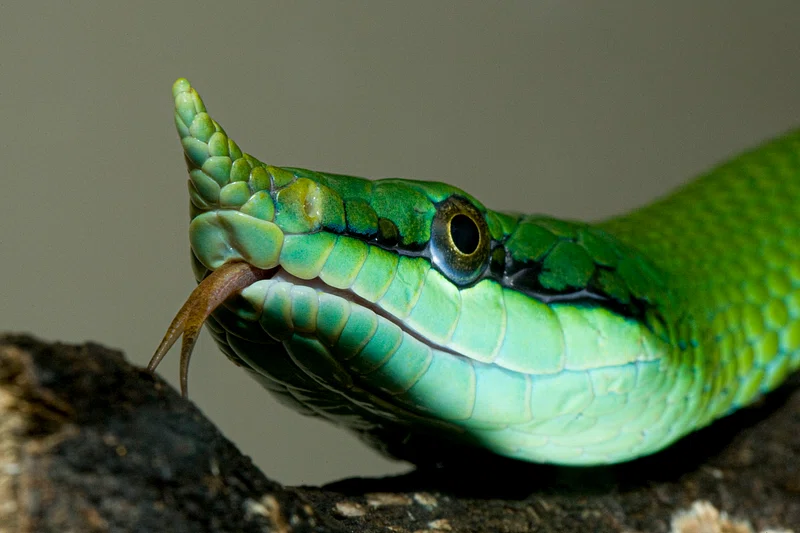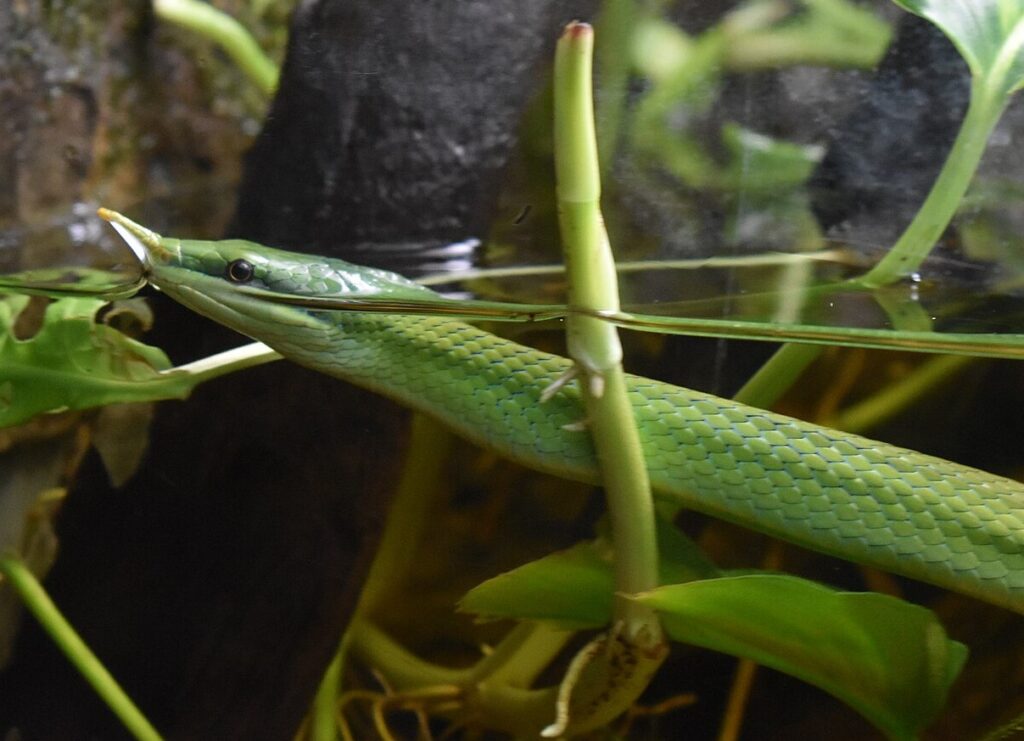Rhinoceros ratsnake
Gonyosoma boulengeri

Soft and flexible snout
The long “snout” of the Rhinoceros ratsnake does not function as a real snout or nose. It is not made up of bone, nor is it used to smell. Why the snake has such a long “snout” is not really known. Some researchers believe that it is used in mating rituals for fighting. But the snout is soft and flexible because it is made up of skin and scales – and why it exists, no one has really been able to prove.

Photo: Smithsonians-National-Zoo-Public-Domain
Changing colour as it matures
The rhinoceros ratsnake is also called Vietnamese longnose snake. As the name suggests, the snake lives mainly in Vietnam. It lives in damp, hilly wooded areas near water. Females lay eggs, which hatch after about two months. When their young hatch, they have a brownish colour, which changes first to bluish-grey and later to green as the young matures.

Photo: Tylwyth-Eldar-CC-BY-SA
Distribution worldwide
North Vietnam and a small island in southern China.

Threat based on the Red List

Trade regulations
CITES: Not listed.